Leaving Tokyo
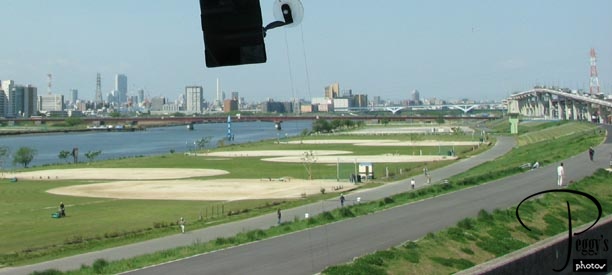
Sunrise Tours picked me up at my hotel again at 8:15 a.m. to meet my tour at the bus station. The two guys from Houston and the guy from San Franciso who were on my Kamakura tour were also there––they were going to Mt. Fuji today. It was like meeting old friends again. I was taking the Nikko National Park Day Trip to visit the Rinnoji Buddhist Temple and the Toshogu Shrine in Nikko and then to take a death–defying ride up to and down from the Nikko National Park to see the Kegon Waterfall. Photo: On our way out of Tokyo along the Sumida River––you can see the green side of the riverbank, the side I didn’t see on my Sumida River cruise.
Leaving Tokyo

Sunrise Tours picked me up at my hotel again at 8:15 a.m. to meet my tour at the bus station. The two guys from Houston and the guy from San Franciso who were on my Kamakura tour were also there––they were going to Mt. Fuji today. It was like meeting old friends again. I was taking the Nikko National Park Day Trip to visit the Rinnoji Buddhist Temple and the Toshogu Shrine in Nikko and then to take a death–defying ride up to and down from the Nikko National Park to see the Kegon Waterfall. Photo: On our way out of Tokyo along the Sumida River––you can see the green side of the riverbank, the side I didn’t see on my Sumida River cruise.
View on the Way to Nikko
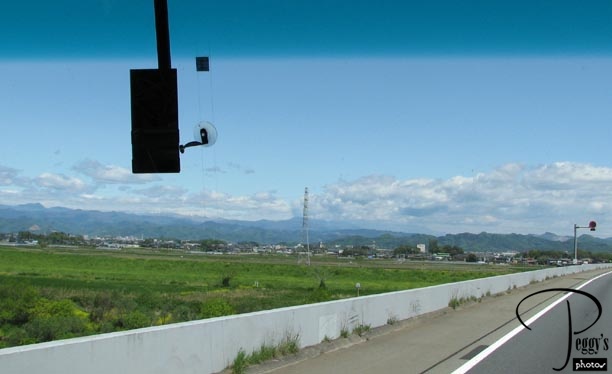
Seen on our way to Nikko. Nikko is northwest of Tokyo, about a three–hour drive.
Kats
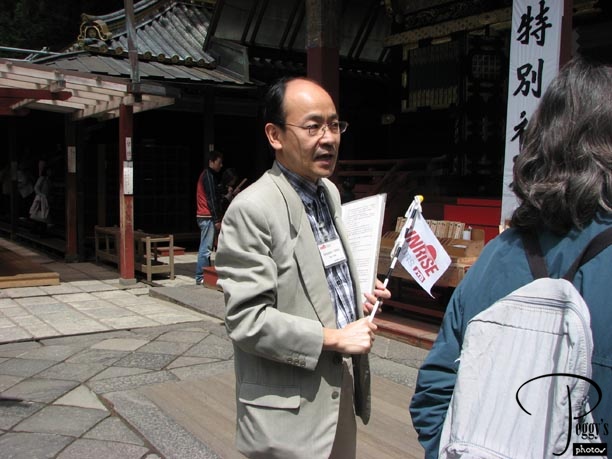
Our tour guide Katsuhito. He told us to call him by his nickname: Kats. Photo taken later.
Japanese Script
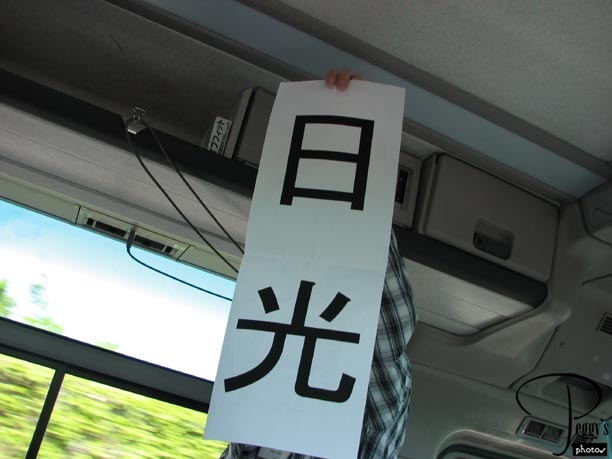
Kats gave us a good explanation of Japanese script. First are the Kanji, which are ideographs taken from the Chinese; then the Hiragana, a set of symbols that approximate syllables that make up words––phonetic symbols; and next the Katakana, phonetic symbols for foreign and other sounds. Many Japanese words use all three symbols. You can write Japanese either from left to right or up and down. There is also Romanized Japanese––romaji––which is used for computer imput. The photo shows “Nikko” spelled with Chinese–like characters.
Japanese Script

Nikko” spelled in one of the phonetic languages.
Japanese Script
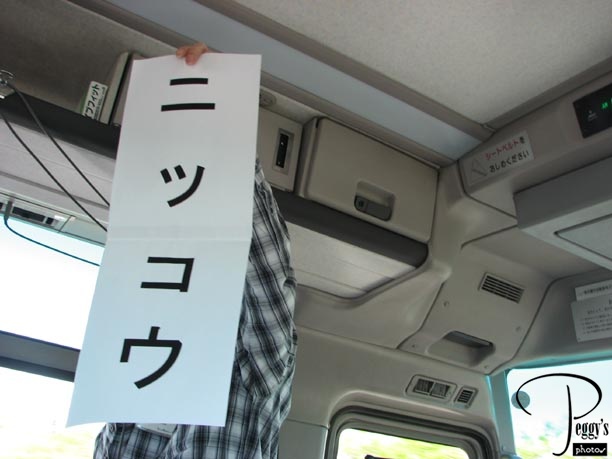
“Nikko” spelled in the other phonetic language.
View on the Way to Nikko
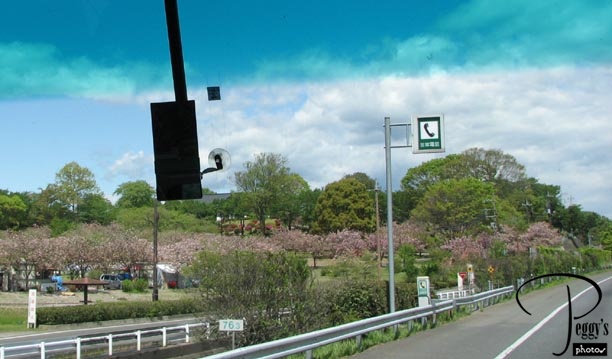
Seen on our way to Nikko.
View on the Way to Nikko
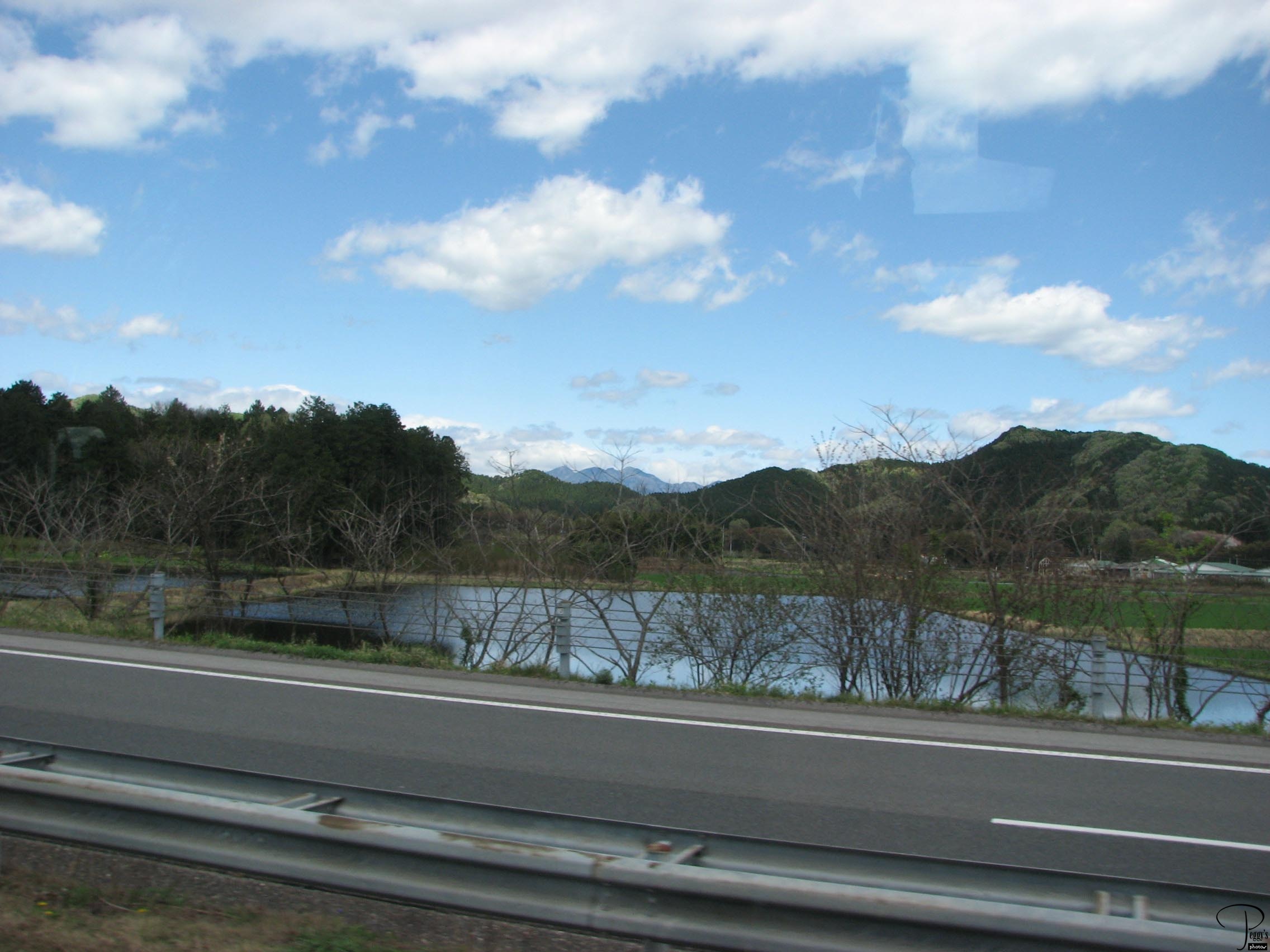
Seen on our way to Nikko.
View on the Way to Nikko
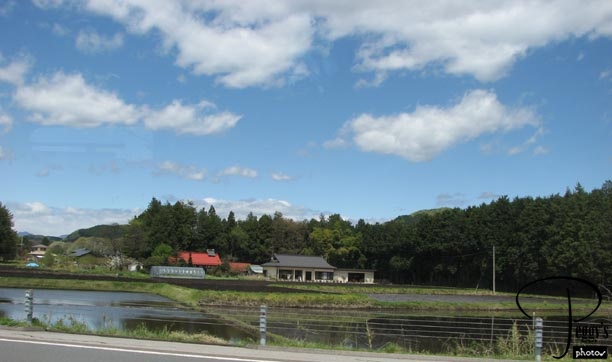
Seen on our way to Nikko.
View on the Way to Nikko
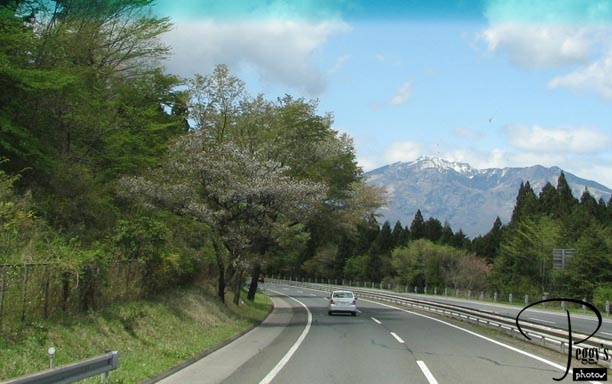
Seen on our way to Nikko.
Nikko
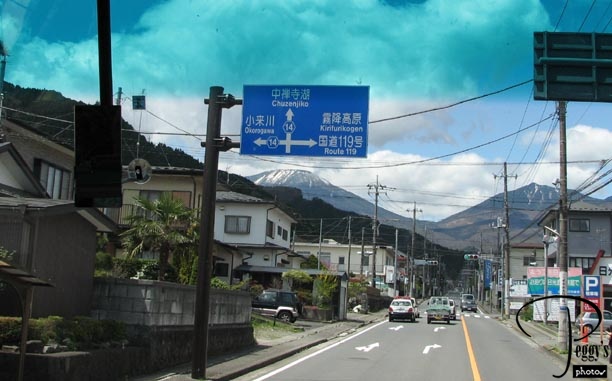
Entering the town of Nikko.
Nikko
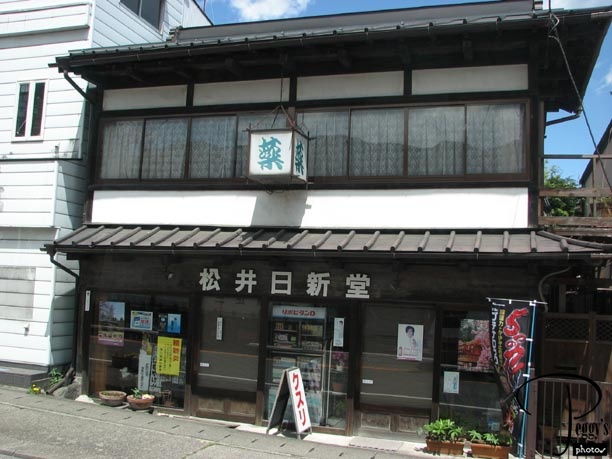
A Nikko store.
Rinnoji Buddhist Temple
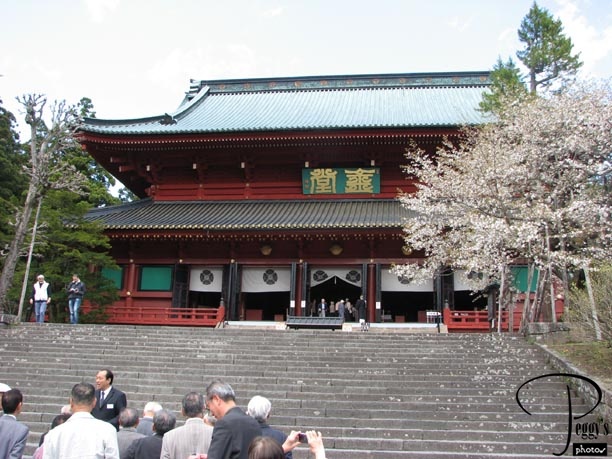
The Rinnoji Buddhist Temple adjoins the property of the Toshogu Shrine and we visited it first. The Rinnoji Temple was founded by Shodo Shonin, who introduced Buddism to Nikko in the 5th century. It is Nikko’s most important Buddhist temple. Photo: the Sanbutsudo, the main building.
Rinnoji Buddhist Temple
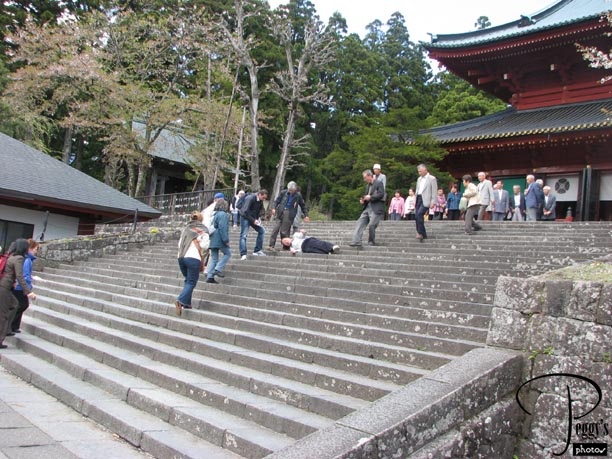
What happened to this poor man is what I fear will happen to me when I climb stairs without rails––I get vertigo, and about 10 stairs up, I start to get dizzy. I asked if there was another way up and I was directed to an incline on the side of the building. The man was no longer laid out on the stairs when I got to the front of the temple. When we got to the Toshogu Shrine, I encountered some more steps without rails, but I just borrowed someone’s arm to walk up and down the stairs––this worked well.
Rinnoji Buddhist Temple
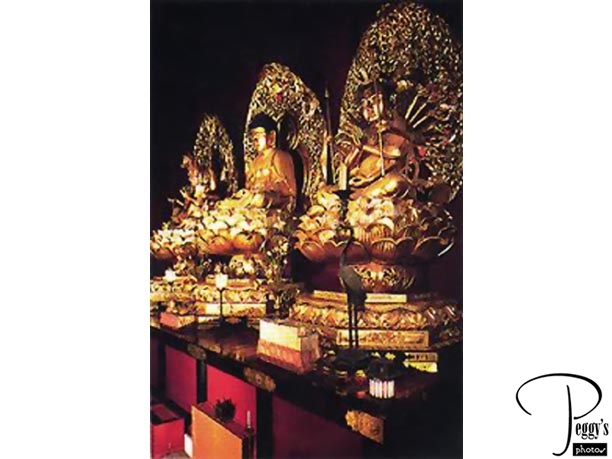
No photo–taking was allowed in the temple, so here is a photo I took from the Internet. These are large gilded wooden statues of Amida Buddha, Senju–Kannon (Kannon with 1000 arms), and Bato–Kannon (Kannon with a horse head). There were also smaller Buddhas representing the 12–year zodiac cycle: the rat, ox, tiger, rabbit, dragon, snake, horse, sheep, monkey, rooster, dog, and boar. 2009 is the Year of the Ox. I couldn’t take a photo of of the statues and I haven’t found them on the Internet, but they were very interesting.
Rinnoji Buddhist Temple
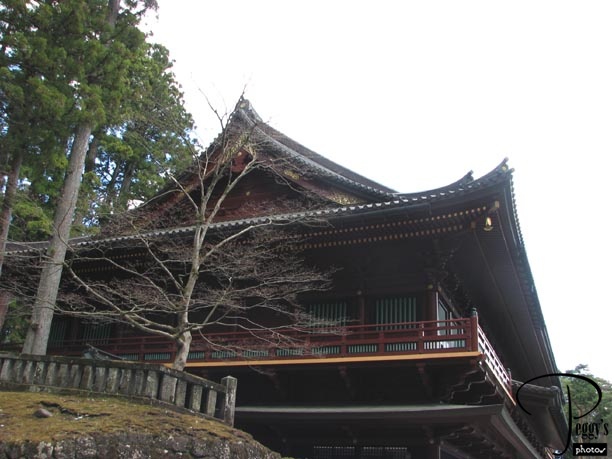
The Sanbutsudo from the side. There are many interesting things to see at this temple, but we only walked through the main house.
Japanese History Lesson
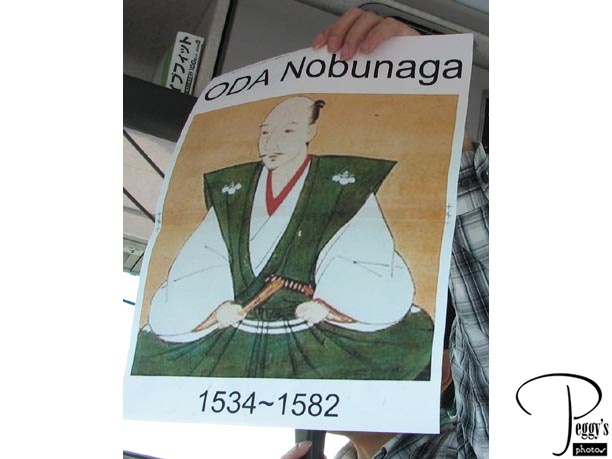
Kats gave us a Japanese history lesson. The first of the great unifiers of Japan was this man, Oda Nobunga (1534–1582).
Japanese History Lesson
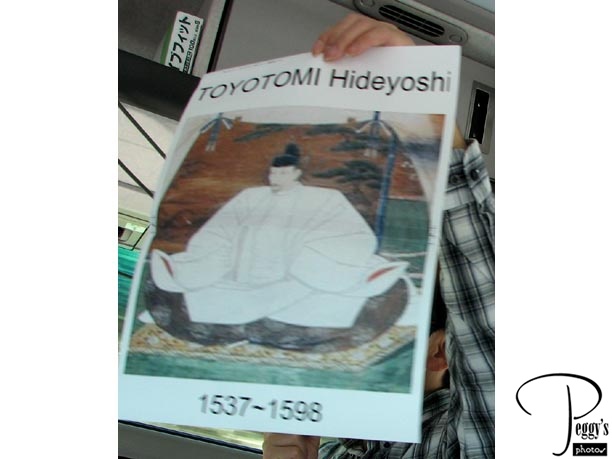
The man to follow him in unifying Japan was Toyotomi Hideyoshi (1537–1598).
Japanese History Lesson
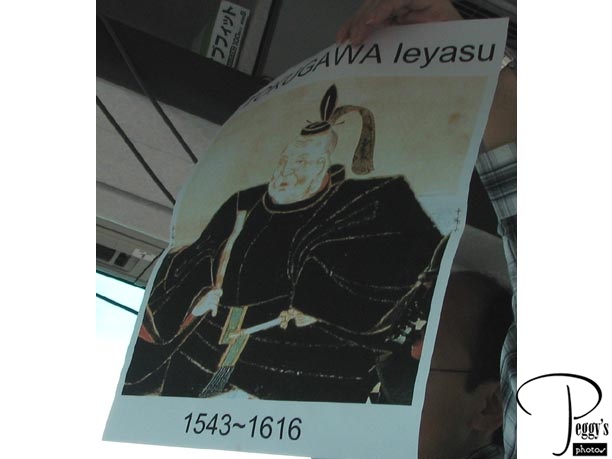
The next was Tokugawa Ieyasu (1543–1616). Neither of the first two leaders took the title of shogun, but the title was bestowed on Ieyasu, who became the first Tokugawa shogun. It is said of the three: of Oda Nobunaga––”If the coocoo doesn’t sing, I will kill it”; of Toyotomi Hideyoshi––”If the coocoo doesn’t sing, I will make it sing”; and of Tokugawa Ieyasu––”if the coocoo doesn’t sing, I will wait for it to sing.” The shrine that we will now visit is for Tokugawa Ieyasu.
Nikko Toshogu Shrine
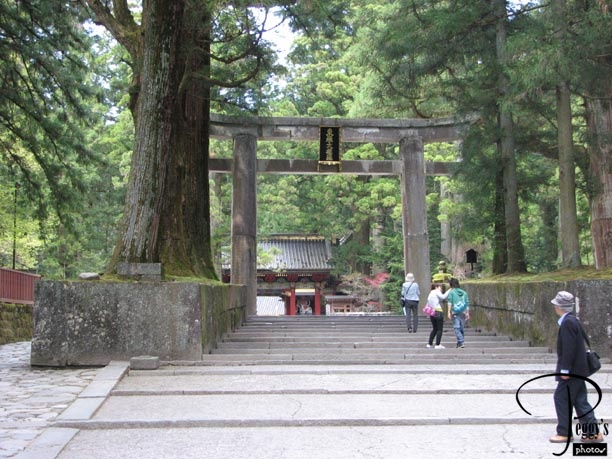
Photo: The torii at the entrance to the Nikko Toshogu Shrine and the Sugi–Namiki of Japanese cedar trees planted in the 17th century. Tokugama Ieyasu only wanted a simple shrine to him on his death. This wish was granted by his son Tokugama Hidetada. But his grandson, Tokugama Iemitsu, had other ideas. He built the Nikko Toshogu Shrine as a memorial to his grandfather. It took two years and 15,000 Japanese artisans to build the shrine and the result is truly magnificent.
Nikko Toshogu Shrine
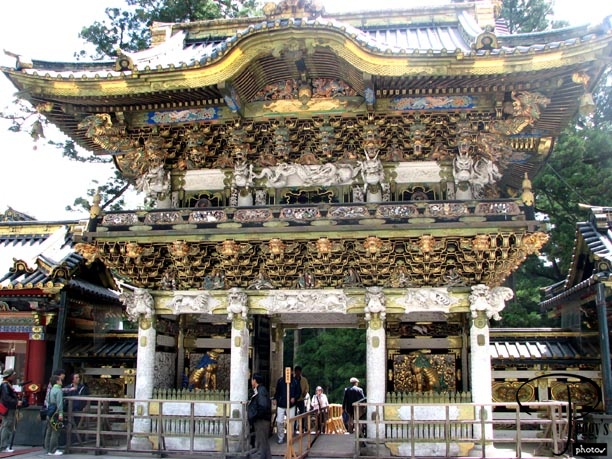
One of the magnificent shrine buildings. I have put my photos of the Nikko Toshogu Shrine on a slide show on this website: Go to Slide Shows, Asia, Japan, “Nikko: Nikko Toshogu Shrine. The shrine has both Shinto and Buddhist elements, the Buddhist being a pagoda, a sutra library, and a Nimon gate, among others. We weren’t given enough time at the shrine to see it all or to take all the photos we wanted to. I recommend going to Nikko on your own (even though the tour was well run)––you need more time here.
Japanese Lunch
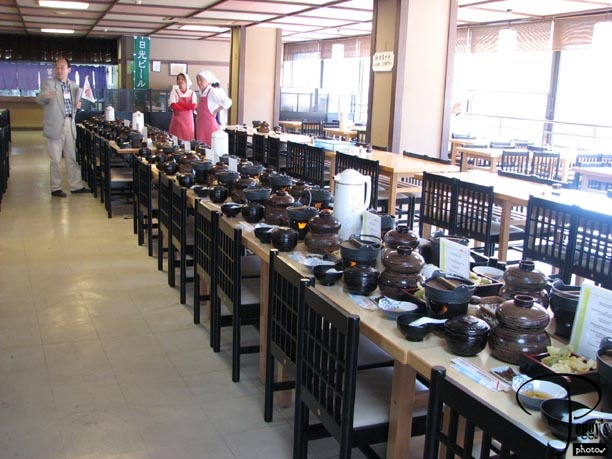
After leaving the Toshogu Shrine, it was time for lunch. We ate at this restaurant. I sat with a group of eight people––I called it the Italian table as there were two couples from Italy (Como and Venice), a single woman from Rome, plus a woman from Australia, Kats, and me.
Japanese Lunch
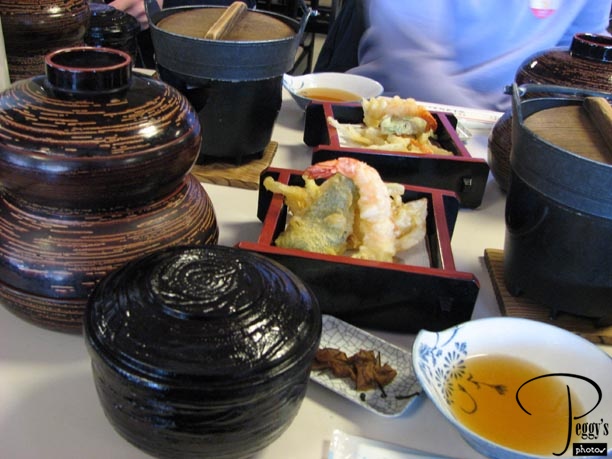
Deep fried vegetables and tempura––what I had last night for dinner but very good and I certainly didn’t mind eating it a second time.
Japanese Lunch
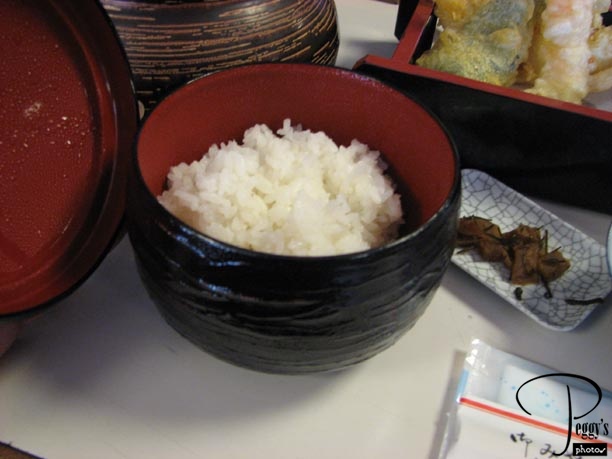
Rice and some eggplant somewhere.
Japanese Lunch
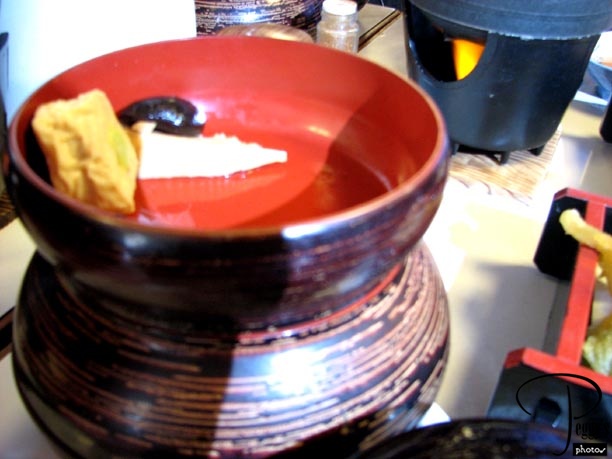
In a series of three bowls one on top of the other––top bowl, not sure.
Japanese Lunch
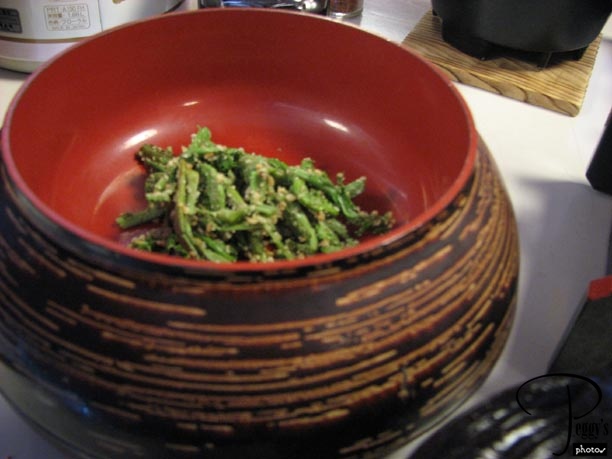
In the middle bowl, vegetables mixed with yuba which is from soybeans.
Japanese Lunch
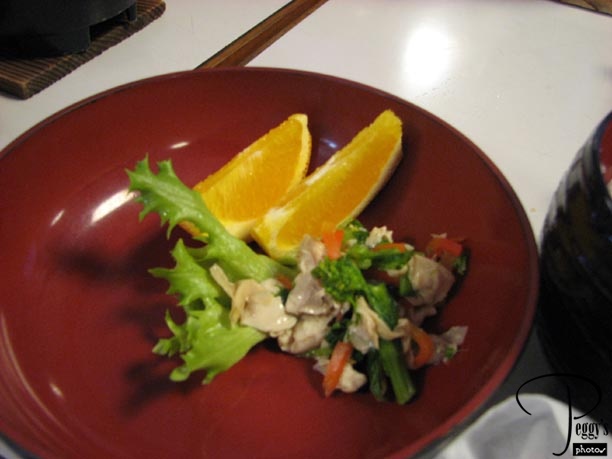
Bottom bowl, oranges and not determined.
Japanese Lunch
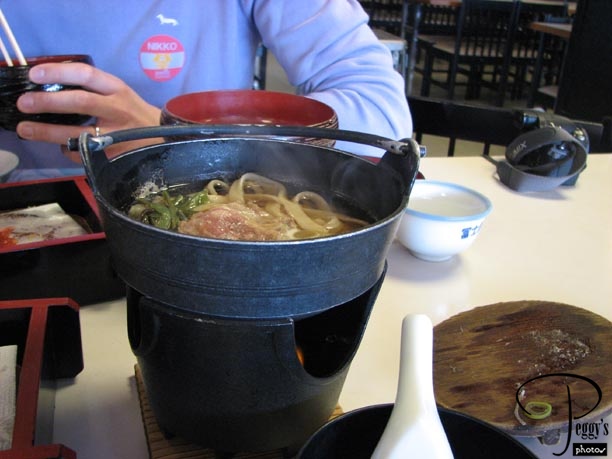
Soup with noodles and duck meat. I ate the soup (but avoided the duck meat), the oranges, the rice, and the tempura shrimp and vegetables. I offered Kats what I wasn’t going to eat and he took it.
Nikko
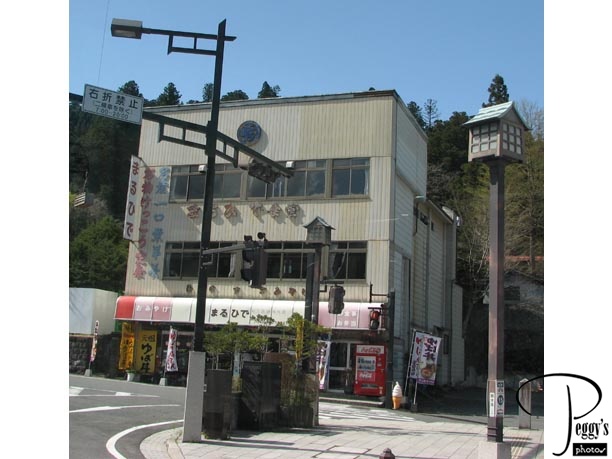
Going through the town of Nikko––Japanese building.
Nikko
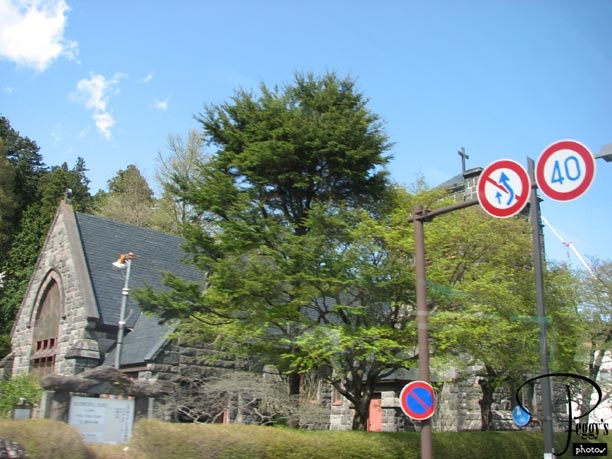
I was very surprised next to see this building. It looks like an English Anglican church.
Nikko National Park
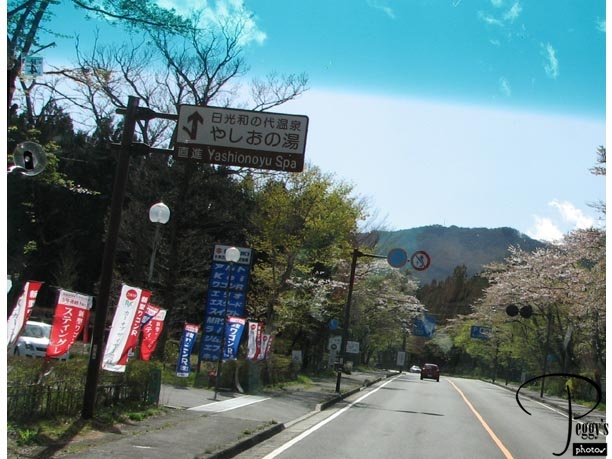
On our way to go up the mountains of Nikko National Park. Some cherry trees are in bloom.
Nikko National Park

Starting to go up on the Irohazaka highway––only 20 hairpin curves going up. The road was wide with two lanes and traffic was allowed only in one direction. I had the front seat of the bus but only suffered a bit of unease going up the mountain, but was glad when we got to the top.
Nikko National Park
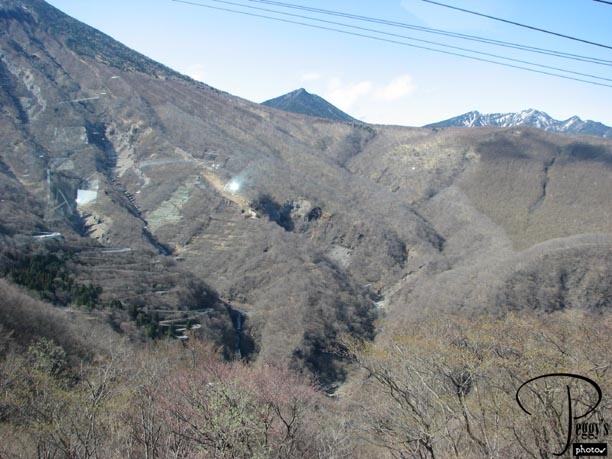
The time of the year to take this trip is in the fall as there are beautiful rust–colored trees here then. At this time of the year, it was dry and brown.
Nikko National Park
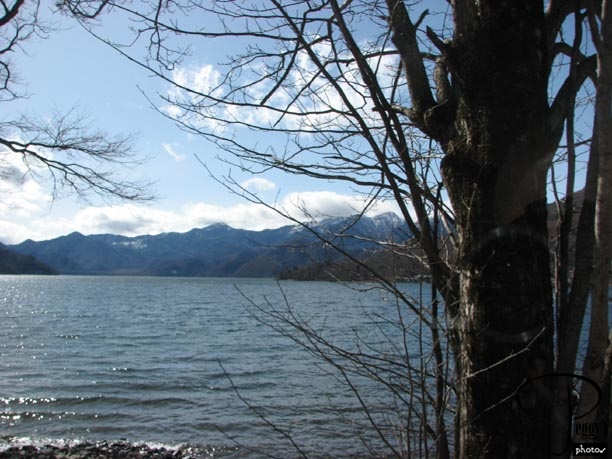
We are at Lake Chuzenji, which is at the foot of the sacred volcano Mount Nantai. The lake was formed by lava flows from the extinct volcano.
Nikko National Park
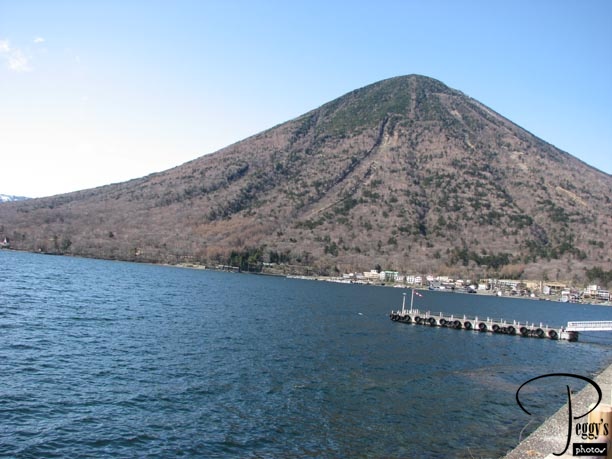
Lake Chuzenji, a popular resort.
Nikko National Park
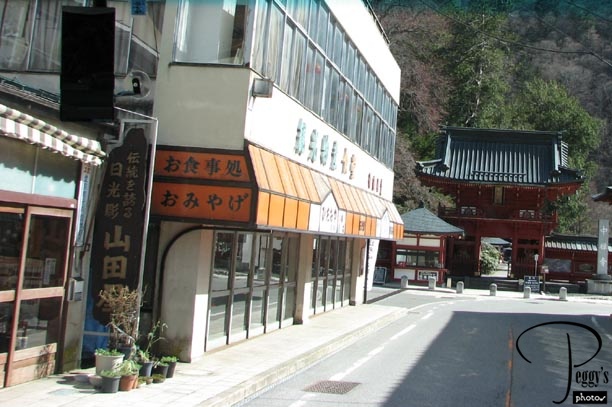
Going through a small town with a shrine at the end of the street.
Nikko National Park
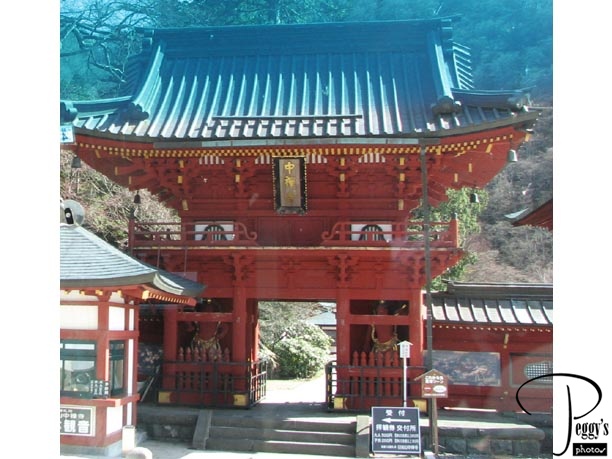
Close–up of the entrance to the shrine.
Nikko National Park
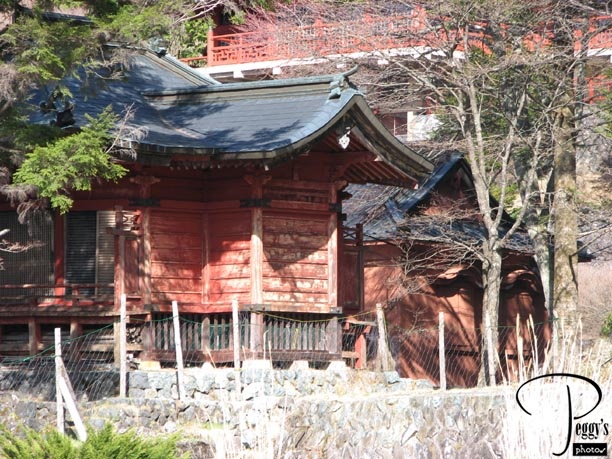
I don’t know if this building is part of the shrine complex or if it is a Japanese cabin.
Nikko National Park
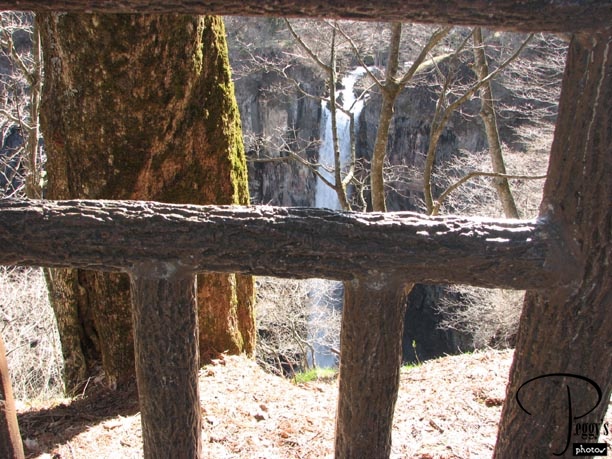
The 351–foot (100–meter) Kegon Waterfall, the second highest waterfall in Japan.
Nikko National Park
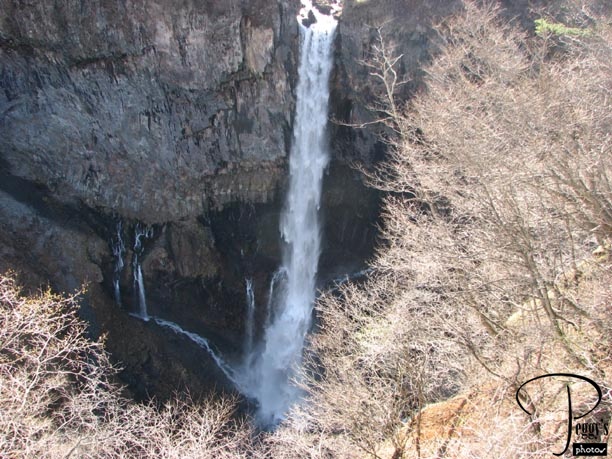
Another photo of the Kegon Waterfall.
Nikko National Park
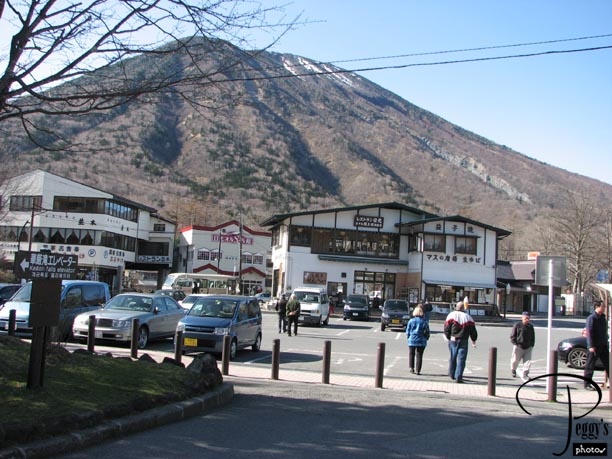
Kats told us there was a unique pottery store in the building on the right side of this photo.
Nikko National Park
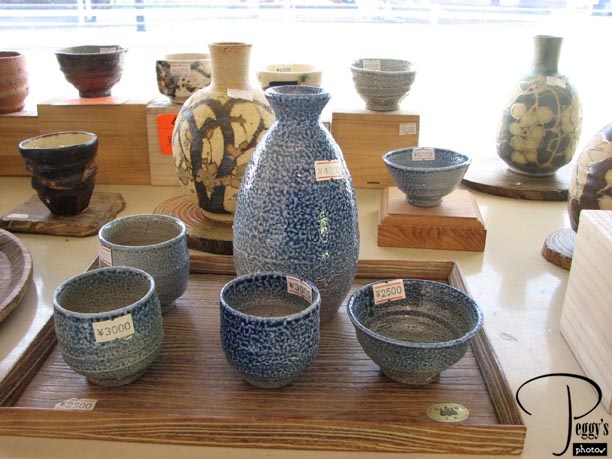
Some of the pottery sold at the pottery store.
Nikko National Park
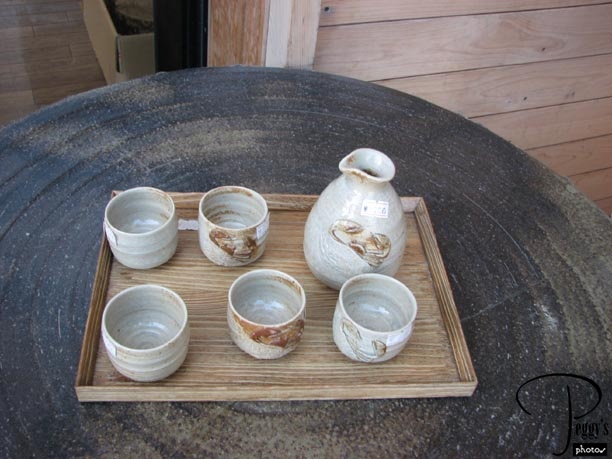
More of the pottery.
Nikko National Park
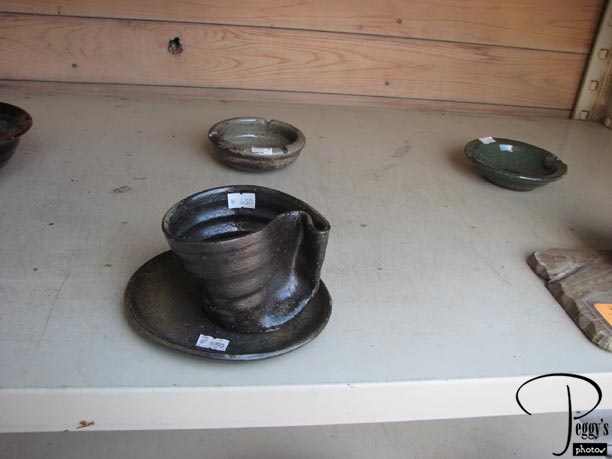
And more. We next took the Irohazaka Highway down the mountain. The one–way highway down was just a bit over one lane wide. The front seat of a big bus is not the seat you want going down this road––my seat. I held my breath on all the 28 hairpin turns––Are we going to crash into the side of the mountain? Are we going to crash into and/or over the side rail on the edge? It was not a good feeling. But I knew the driver had taken the bus along this route a hundred times previously––I was very glad when we got to the bottom of the mountain. I did not think the death–defying, harrowing trip up and down the mountain to see Lake Chuzenji and the Kegon Waterfall was time well spent. The tour was well run but I recommend going to Nikko on your own, even spending a few days here as there are quite a number of other interesting temples and shrines to visit.
To Tokyo
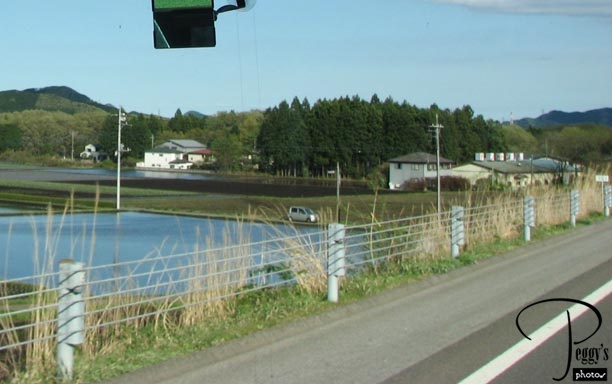
View on the way back to Tokyo.
Tokyo at Night

Back in Tokyo. It took us about three hours to get back to Tokyo with a 15–minute restroom stop. Then, another 1/2 hour to get to Ginza, where I got off the bus. I spent sometime taking photos of Ginza at night and have already put them on a slide show on this website: Go to slide Shows, Asia, Japan, “Tokyo at Night.” I felt entirely comfortable walking around Ginza by myself at night and also taking the subway and monorail at night. I felt safer in Tokyo, walking around by myself, both during the night and the day, than in any other city, either foreign or in the United States, I have been in. That says a lot about Tokyo. I arrived at the Daiba monorail station at 8:30 p.m. and went right to Aqua City to eat, what else but, a hamburger, onion rings, fries, and a coke. Then back to my hotel to pack––we were going home the next day.













































